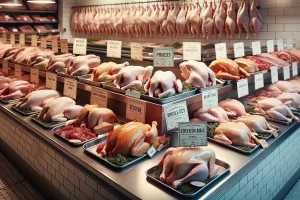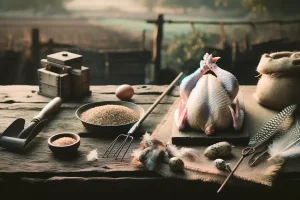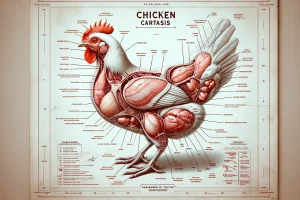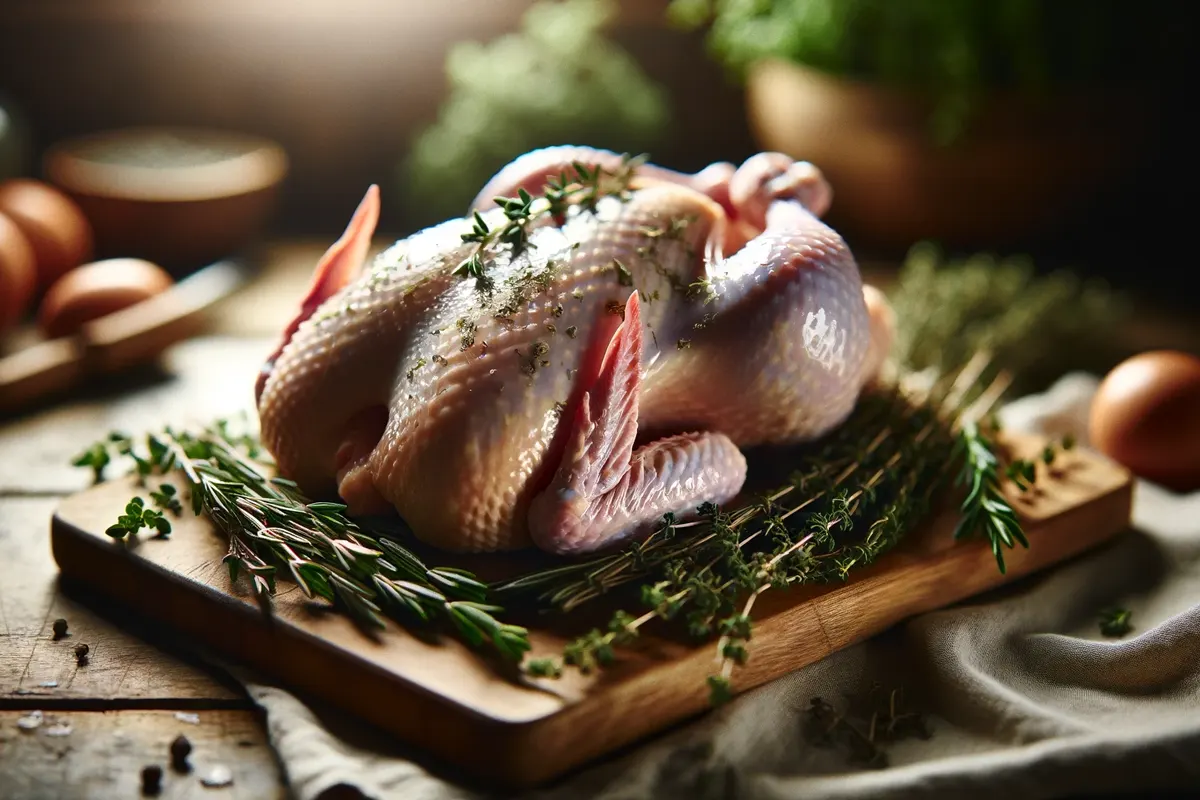In the realm of poultry, the term chicken carcass doesn’t just resonate with butchers and chefs; it’s a pivotal focus for anyone keen on understanding the profound layers of what makes chicken, well, taste like chicken. From the tender, juicy slices that grace our plates to the rich, aromatic broths that warm our souls, the journey of a chicken carcass from farm to fork is a tale of science, culture, and culinary art. This article embarks on an exploration of this journey, dissecting not only the physical attributes of chicken carcasses but also the nuanced factors that influence their growth, quality, and the delectable flavors they harbor. So, buckle up as we dive into the fascinating world of chicken carcasses, where every detail counts in the pursuit of perfection.
Introduction to Chicken Carcass
Overview of Chicken Meat Consumption
Ah, chicken! A staple in diets across the globe, chicken meat stands out not just for its nutritional value but also for its universal appeal. High-quality protein, low fat, and cholesterol levels make chicken a heart-healthy choice, free from the shackles of cultural or religious dietary restrictions. It’s the go-to meat for a good chunk of humanity, and for good reason! The demand for chicken meat is sky-high, driving the genetic selection of birds towards rapid growth and impressive carcass yield. But, as with all things, there’s a flip side. This very selection could be messing with the sensory and functional properties of chicken meat, raising a flag for both producers and gourmands alike.
Indigenous vs. Broiler Chickens
In the poultry pecking order, indigenous chickens have long held their ground against their fast-growing cousins, the broilers. Indigenous breeds, with their resilience to diseases and harsh environments, along with unique meat quality traits, present a compelling case for diversity in the chicken world. Take, for example, the indigenous chickens of China, known for their higher inosine-5′-monophosphate (IMP) content and tender meat, offering a sensory experience that broilers might find hard to match. Yet, when it boils down to the crunch, broiler chickens often lead the race in terms of production efficiency. It’s a classic tale of the tortoise and the hare, each with its own set of virtues and vices in the quest for the ultimate chicken carcass.
A curious mind might ponder, “How long does it take to boil a chicken carcass?” Well, the answer isn’t as straightforward as one might think. It hinges on factors like the age and breed of the chicken, with indigenous varieties possibly taking a tad longer due to their denser muscle fibers compared to the more tender broilers.
As we delve into the complexities of chicken carcasses, exploring everything from genetic selection’s impact to the balance between growth performance and meat quality, the multifaceted nature of poultry becomes evident. The FAO’s extensive coverage on global food security challenges sheds light on these complexities and their implications for poultry production and consumption. Stay tuned as we delve deeper into the growth performance and carcass traits in our next segment, where science meets taste in the quest for the perfect chicken carcass.

Growth Performance and Carcass Traits
Navigating through the poultry world, it becomes apparent that not all chickens are created equal. The journey from a chirping chick to a full-fledged chicken ready for the table is influenced by a myriad of factors that play a pivotal role in determining the overall quality and yield of the chicken carcass. Let’s unravel the mysteries of growth performance and carcass traits, shall we?
Growth Performance in Chickens
When we talk about growth performance, we’re essentially peeking into the chicken’s report card. How quickly does it gain weight? What’s its feed efficiency like? These questions aren’t just for the farmers to mull over; they’re crucial for anyone vested in the quality of the chicken they consume. In the poultry lexicon, terms like average daily gain (ADG) and feed:gain ratio (F/G) are more than just jargon; they’re indicators of how efficiently a chicken converts feed into body weight.
Indigenous breeds, with their tales of resilience and hardiness, often march to the beat of their own drum when it comes to growth performance. They may not sprint to the finish line like their broiler counterparts, but they bring to the table (quite literally) a rich tapestry of flavors and textures that are the result of their slower growth pace. It’s a dance of nature and nurture, where the genetic blueprint of the breed intertwines with the rearing conditions to sculpt the growth trajectory of these feathered beings.
Carcass Traits and Quality
Ah, the carcass! The pièce de résistance of the chicken’s journey. The carcass traits are like the fingerprints of the chicken, unique indicators of its life and growth. From the dressing percentage, which tells you how much of the live bird translates into the carcass, to the yield of prime cuts like the breast and thigh, every metric is a chapter in the story of the chicken’s life.
But here’s where it gets interesting. The breed and age of the chicken aren’t just footnotes; they’re headline acts in the drama that unfolds on the butcher’s block. Indigenous chickens, often celebrated for their distinctive flavors, might not tip the scales in their favor when it comes to carcass weight and yield, especially when pitted against the broiler behemoths. Yet, it’s this very diversity that enriches our culinary landscape, offering a palette of flavors and textures that cater to a gamut of tastes and preferences.
In this intricate ballet of growth and yield, every chicken plays its part, contributing to the rich mosaic of poultry products that grace our tables. From the hearty broths steeped in tradition to the succulent roasts that herald festive cheer, the tale of the chicken carcass is one of complexity and nuance, inviting us to look beyond the feathers and appreciate the depth of flavors and textures it embodies.
As we continue our journey through the fascinating world of poultry, it’s clear that the story of the chicken carcass is far from over. With every peck and cluck, these avian wonders are scripting a narrative of growth, resilience, and culinary delight. Stay tuned for the next installment, where we’ll dive into the metabolic marvels that shape the flavors and aromas of chicken meat.

Metabolic Profile and Flavor Precursors
Diving deeper into the enigmatic world of poultry, we uncover the intricate web of biochemical reactions that whispers the secrets of flavor and aroma into the flesh of our beloved chickens. The metabolic profile and flavor precursors in chicken meat are not just scientific phenomena; they are the unsung heroes that orchestrate the symphony of tastes that dance on our palates. Let’s embark on a journey to decipher these hidden codes.
Metabolomic Analysis of Chicken Breasts
Imagine if we could eavesdrop on the conversations happening at a molecular level within the chicken breast. Metabolomic analysis does just that, offering us a glimpse into the bustling marketplace of metabolites – small molecules that are the currency of metabolism in living organisms. This analysis sheds light on how different breeds and ages of chickens contribute their unique signatures to the flavor profile of the meat.
For instance, when metabolomic wizards wield their tools on chicken breast tissue, they unravel a tapestry of sugars, amino acids, and organic acids – each a vital thread in the complex weave of flavor. These metabolites are not mere bystanders; they are dynamic participants in the culinary alchemy that transforms a raw, unassuming chicken breast into a mouthwatering masterpiece.
Flavor Precursors in Chicken Meat
But what exactly are these flavor precursors that metabolomic analysis brings to light? They are the building blocks of taste, the raw ingredients waiting to be transformed by the heat of the kitchen into the flavors and aromas that define a dish. Compounds like inosine monophosphate (IMP) and glutamate are the maestros of umami, lending a savory depth to chicken that makes it irresistibly delectable.
Then there’s the role of amino acids, the very essence of proteins, which under the intense scrutiny of heat, undergo the Maillard reaction – a chemical ballet that paints the golden hues of roasted chicken and fills the air with its enticing aroma. And let’s not forget the lipids, those fatty molecules that carry the whispers of flavors, ensuring that every bite is a journey of discovery.
As we navigate the labyrinth of metabolic pathways, we begin to appreciate the complexity of factors that shape the culinary identity of chicken. From the breed that bestows its genetic blueprint to the age that marks the passage of time, each element adds a layer of nuance to the flavor profile.
In this exploration of metabolic profiles and flavor precursors, we stand at the crossroads of science and gastronomy, marveling at how the invisible hand of biochemistry sculpts the sensory landscape of our meals. The journey of the chicken carcass, from farm to fork, is a testament to the beauty of complexity, inviting us to savor not just the flavors it offers but also the marvels of nature and nurture that bring those flavors to life.

FAQs on Chicken Carcass
As we wrap up our culinary expedition through the world of chicken carcasses, let’s simmer down to address some sizzling questions that might be pecking at your curiosity. These FAQs aren’t just about filling gaps in knowledge; they’re about enriching our appreciation for every aspect of chicken, from beak to claw.
What determines the quality of a chicken carcass?
Ah, the million-dollar question! The quality of a chicken carcass is like a mosaic, composed of various pieces that come together to create a complete picture. Think of factors like the texture and firmness of the meat, the color of the skin, and the overall plumpness of the bird. But it’s not just what meets the eye; intrinsic factors like the flavor profile, nutritional content, and absence of defects play a pivotal role too. It’s a dance of genetics, feed, and rearing practices that determines whether a chicken carcass takes the crown or falls flat.
How does the age of a chicken affect its carcass and meat quality?
Time, the silent sculptor, works its magic on chicken carcasses too. As chickens age, their muscles mature, influencing both the texture and flavor of the meat. Younger chickens, often tender and mild, are the darlings of delicate dishes, while their elder counterparts, with more developed flavors and firmer textures, shine in slow-cooked marvels. It’s a testament to the adage that good things come to those who wait, with age imparting a character to the meat that quick fixes can’t replicate.
Why are indigenous breeds preferred for certain culinary purposes?
Indigenous breeds are like the heirloom tomatoes of the poultry world – cherished for their unique flavors, textures, and stories. These breeds, often slower to grow and less uniform than their commercial counterparts, bring a palette of tastes and textures to the table that’s hard to find elsewhere. Their meat, imbued with the richness of a diverse genetic heritage and the nuances of traditional rearing practices, offers a culinary experience that’s as much about savoring flavors as it is about preserving heritage. In dishes where the chicken isn’t just an ingredient but the star of the show, indigenous breeds can turn a simple meal into a gastronomic journey.
In the grand tapestry of culinary arts, chicken carcasses hold a place of honor, not just as a source of sustenance but as a canvas for culinary creativity. Whether it’s the quest for the perfect roast, the pursuit of the richest broth, or the exploration of flavors from far-flung corners of the world, the humble chicken carcass stands ready to be transformed by the magic of cooking. So, the next time you’re pondering the mysteries of poultry, remember that behind every great chicken dish is a story of growth, flavor, and tradition waiting to be told.

